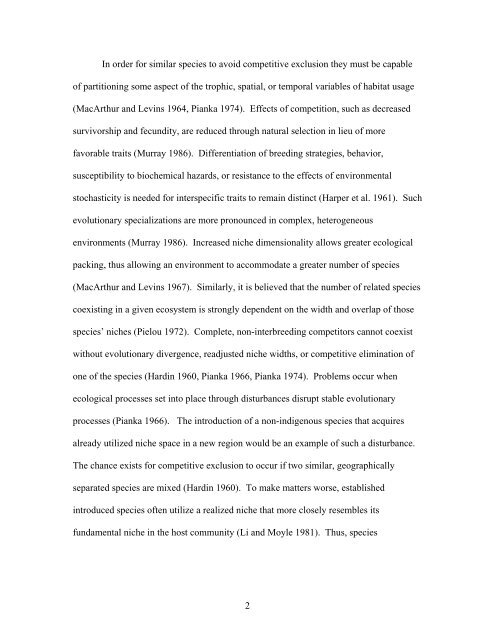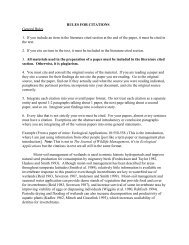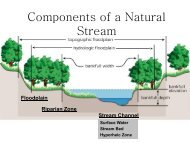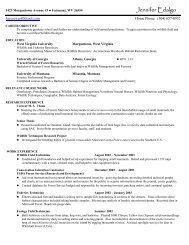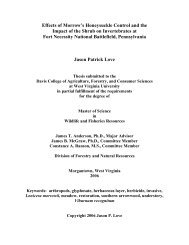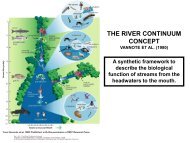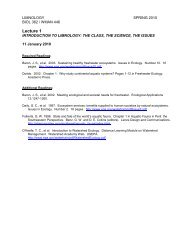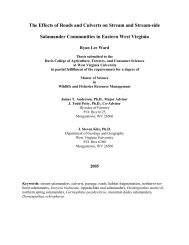An Experimental Study of Vertical Habitat Use and Habitat Shifts in ...
An Experimental Study of Vertical Habitat Use and Habitat Shifts in ...
An Experimental Study of Vertical Habitat Use and Habitat Shifts in ...
You also want an ePaper? Increase the reach of your titles
YUMPU automatically turns print PDFs into web optimized ePapers that Google loves.
In order for similar species to avoid competitive exclusion they must be capable<br />
<strong>of</strong> partition<strong>in</strong>g some aspect <strong>of</strong> the trophic, spatial, or temporal variables <strong>of</strong> habitat usage<br />
(MacArthur <strong>and</strong> Lev<strong>in</strong>s 1964, Pianka 1974). Effects <strong>of</strong> competition, such as decreased<br />
survivorship <strong>and</strong> fecundity, are reduced through natural selection <strong>in</strong> lieu <strong>of</strong> more<br />
favorable traits (Murray 1986). Differentiation <strong>of</strong> breed<strong>in</strong>g strategies, behavior,<br />
susceptibility to biochemical hazards, or resistance to the effects <strong>of</strong> environmental<br />
stochasticity is needed for <strong>in</strong>terspecific traits to rema<strong>in</strong> dist<strong>in</strong>ct (Harper et al. 1961). Such<br />
evolutionary specializations are more pronounced <strong>in</strong> complex, heterogeneous<br />
environments (Murray 1986). Increased niche dimensionality allows greater ecological<br />
pack<strong>in</strong>g, thus allow<strong>in</strong>g an environment to accommodate a greater number <strong>of</strong> species<br />
(MacArthur <strong>and</strong> Lev<strong>in</strong>s 1967). Similarly, it is believed that the number <strong>of</strong> related species<br />
coexist<strong>in</strong>g <strong>in</strong> a given ecosystem is strongly dependent on the width <strong>and</strong> overlap <strong>of</strong> those<br />
species’ niches (Pielou 1972). Complete, non-<strong>in</strong>terbreed<strong>in</strong>g competitors cannot coexist<br />
without evolutionary divergence, readjusted niche widths, or competitive elim<strong>in</strong>ation <strong>of</strong><br />
one <strong>of</strong> the species (Hard<strong>in</strong> 1960, Pianka 1966, Pianka 1974). Problems occur when<br />
ecological processes set <strong>in</strong>to place through disturbances disrupt stable evolutionary<br />
processes (Pianka 1966). The <strong>in</strong>troduction <strong>of</strong> a non-<strong>in</strong>digenous species that acquires<br />
already utilized niche space <strong>in</strong> a new region would be an example <strong>of</strong> such a disturbance.<br />
The chance exists for competitive exclusion to occur if two similar, geographically<br />
separated species are mixed (Hard<strong>in</strong> 1960). To make matters worse, established<br />
<strong>in</strong>troduced species <strong>of</strong>ten utilize a realized niche that more closely resembles its<br />
fundamental niche <strong>in</strong> the host community (Li <strong>and</strong> Moyle 1981). Thus, species<br />
2


